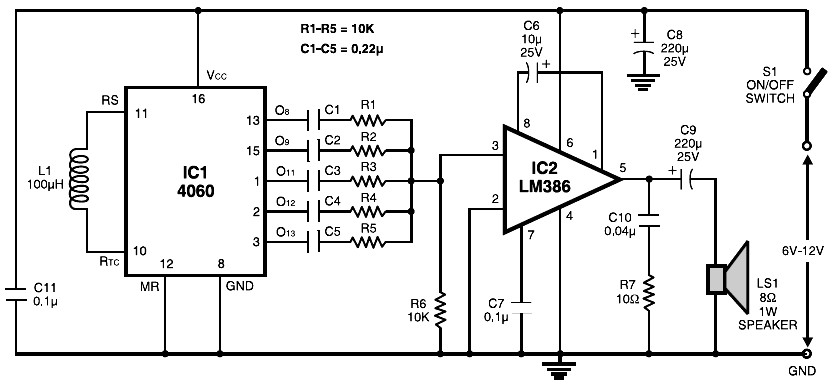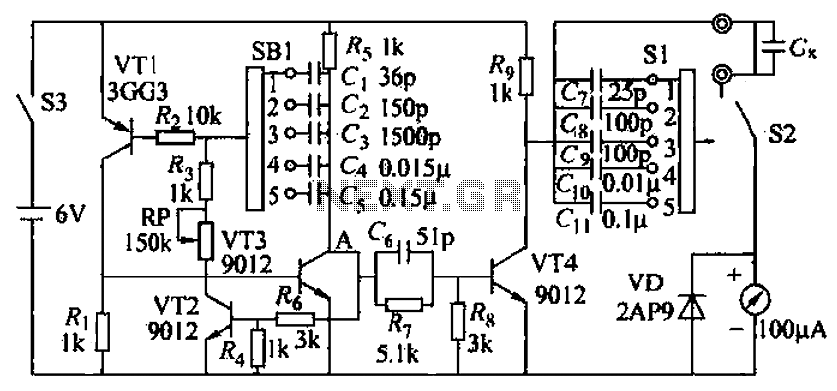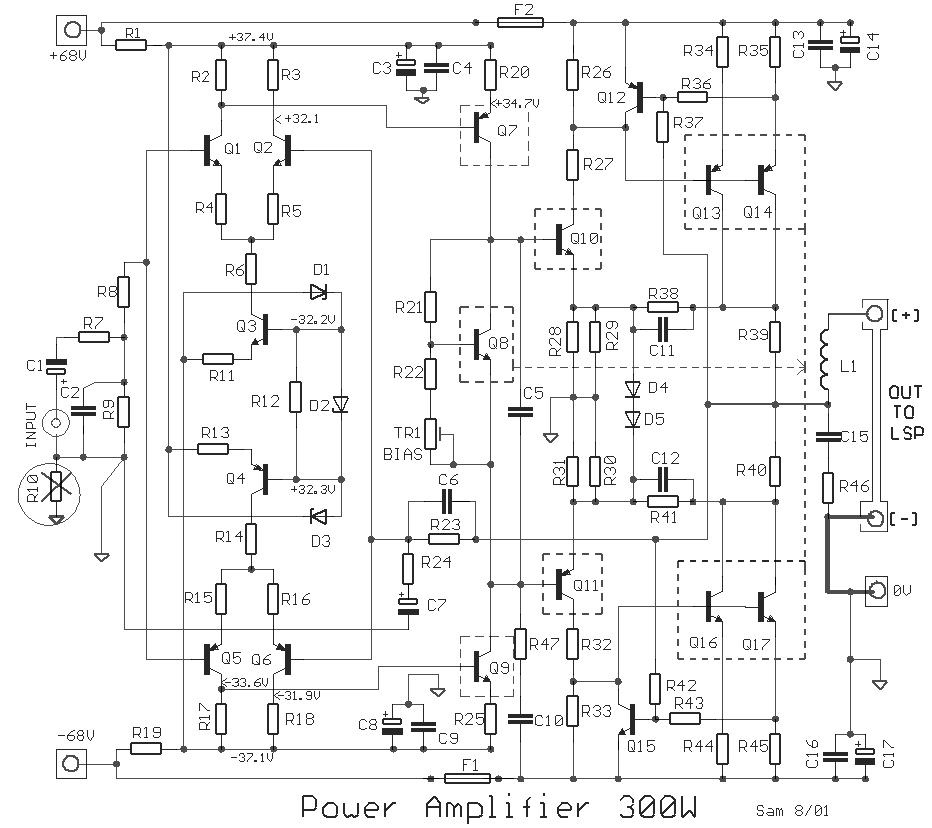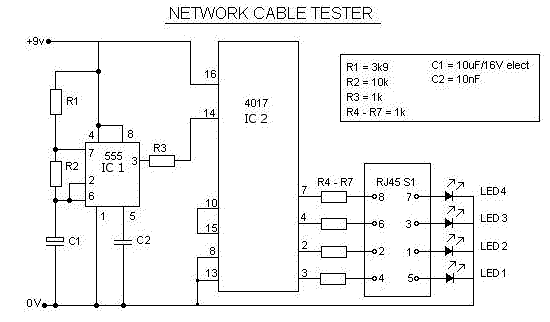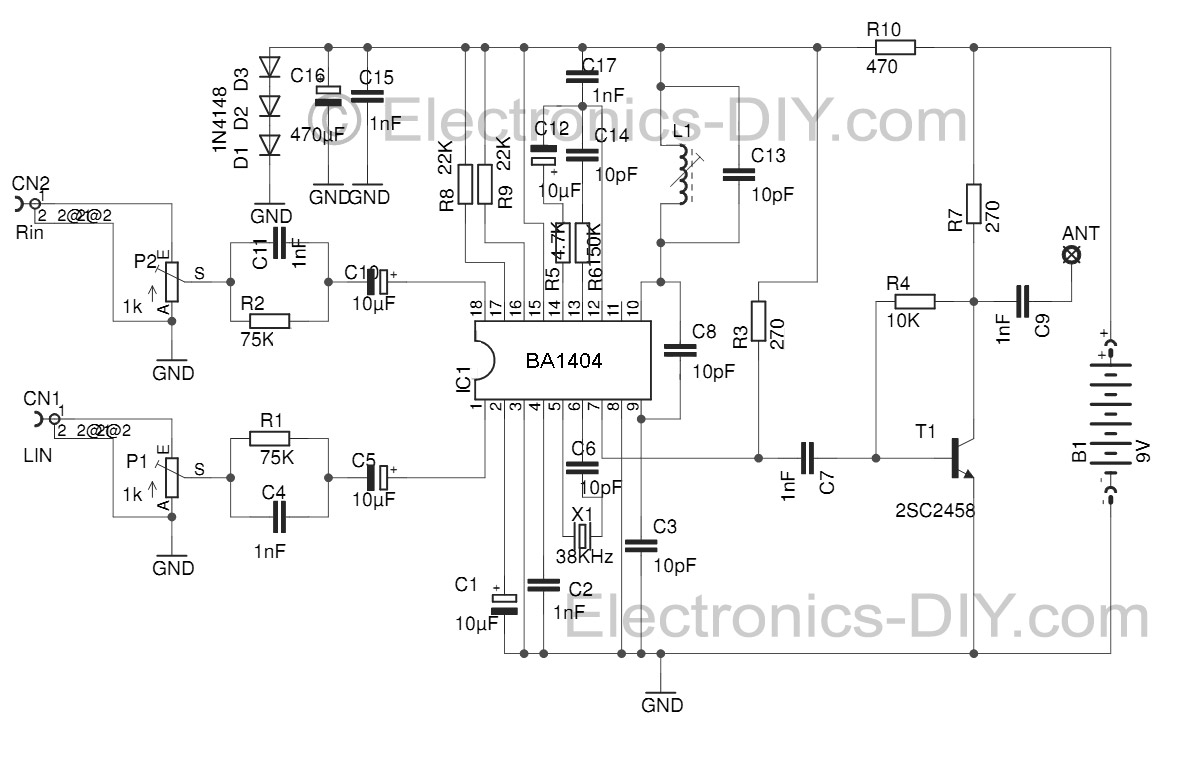
1Khz Harmonic Distortion Meter Circuit
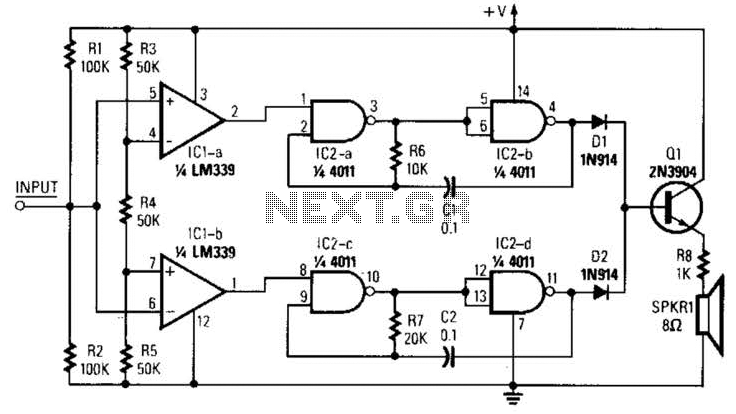
The circuit designed for distortion measurements eliminates the fundamental frequency of 1 kHz, enabling the assessment of the residual harmonic levels. Initially, a true RMS meter is employed to measure the 1-kHz input level (E^) by positioning the switch (SA) to the input setting. Subsequently, the switch is moved to the distortion position, and the 2 kΩ potentiometer is calibrated to achieve a null reading. The residual measurement is then recorded. Additionally, the Total Harmonic Distortion (THD) is calculated using a specific formula.
The circuit operates by utilizing a true RMS meter to accurately gauge the input signal's amplitude at 1 kHz. The design incorporates a switch (SA) that allows the user to toggle between measuring the input signal and assessing the distortion level. In the input position, the true RMS meter captures the voltage level of the fundamental frequency, which serves as a reference point for further analysis.
Once the initial measurement is obtained, the switch is set to the distortion position. This configuration allows the circuit to filter out the fundamental frequency, isolating the harmonic components present in the signal. The 2 kΩ potentiometer plays a crucial role in fine-tuning the circuit; by adjusting it, the user can minimize the output signal to a null point, effectively canceling out the fundamental frequency and focusing solely on the residual harmonics.
After achieving the null condition, the residual level of harmonics can be accurately noted. This value is essential for calculating the Total Harmonic Distortion (THD), which quantifies the extent of distortion present in the signal relative to the fundamental frequency. The calculation typically involves taking the ratio of the power of the harmonic components to the power of the fundamental frequency, often expressed as a percentage.
This circuit is particularly useful in audio applications, where the fidelity of sound reproduction is critical. By enabling precise measurements of distortion levels, it assists engineers and technicians in evaluating and improving the performance of audio equipment, ensuring high-quality sound output. The circuit useful for distortion measurements notches out the fundamental frequency of 1 kHz to allow measurement of the residual level of harmonics. First a true RMS meter is used to measure the 1-kHz input level E^ by setting SA to the input position.
Then, SA is placed in the distortion position and the 2 k potentiometer is adjusted for a null. The residual reading is noted. The THD is then calculated based on the formula:
The circuit operates by utilizing a true RMS meter to accurately gauge the input signal's amplitude at 1 kHz. The design incorporates a switch (SA) that allows the user to toggle between measuring the input signal and assessing the distortion level. In the input position, the true RMS meter captures the voltage level of the fundamental frequency, which serves as a reference point for further analysis.
Once the initial measurement is obtained, the switch is set to the distortion position. This configuration allows the circuit to filter out the fundamental frequency, isolating the harmonic components present in the signal. The 2 kΩ potentiometer plays a crucial role in fine-tuning the circuit; by adjusting it, the user can minimize the output signal to a null point, effectively canceling out the fundamental frequency and focusing solely on the residual harmonics.
After achieving the null condition, the residual level of harmonics can be accurately noted. This value is essential for calculating the Total Harmonic Distortion (THD), which quantifies the extent of distortion present in the signal relative to the fundamental frequency. The calculation typically involves taking the ratio of the power of the harmonic components to the power of the fundamental frequency, often expressed as a percentage.
This circuit is particularly useful in audio applications, where the fidelity of sound reproduction is critical. By enabling precise measurements of distortion levels, it assists engineers and technicians in evaluating and improving the performance of audio equipment, ensuring high-quality sound output. The circuit useful for distortion measurements notches out the fundamental frequency of 1 kHz to allow measurement of the residual level of harmonics. First a true RMS meter is used to measure the 1-kHz input level E^ by setting SA to the input position.
Then, SA is placed in the distortion position and the 2 k potentiometer is adjusted for a null. The residual reading is noted. The THD is then calculated based on the formula:
